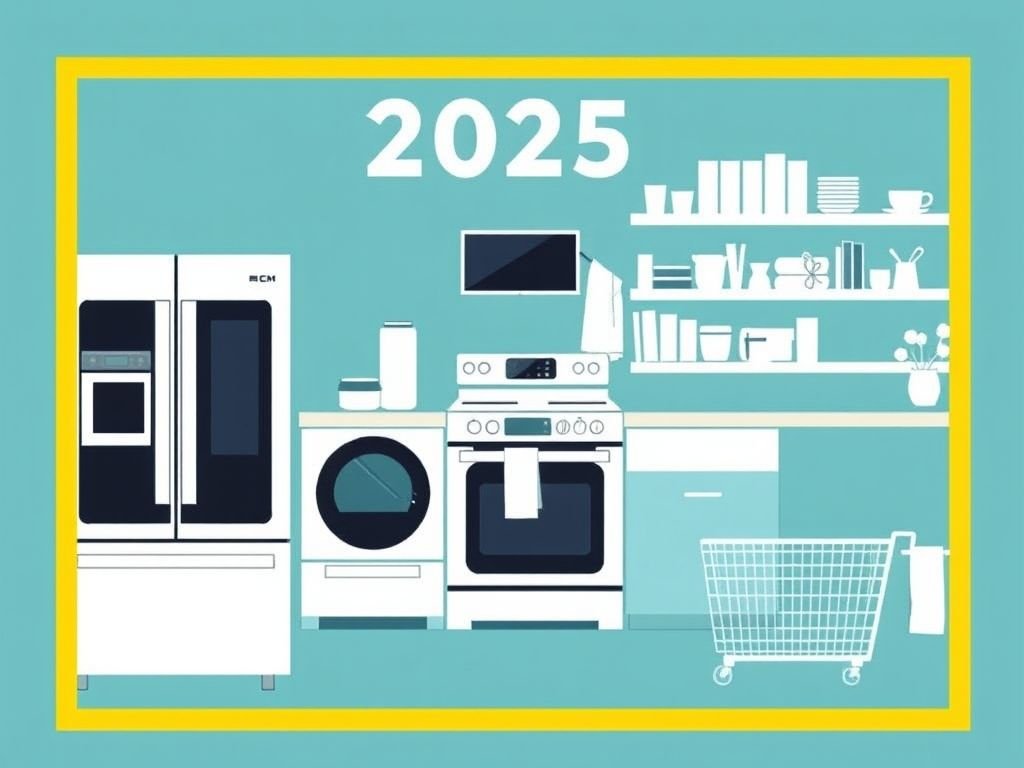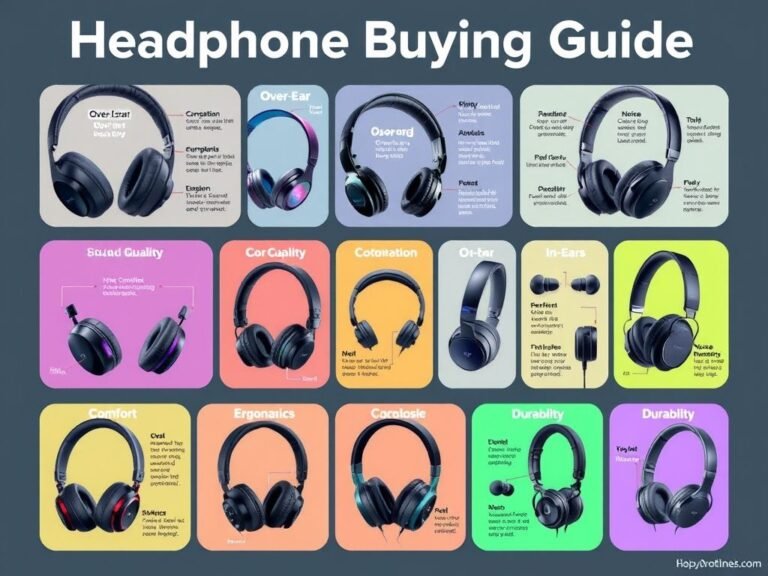
How to Shop for a Large Appliance in 2025: A Smarter, More Sustainable Approach
Buying a refrigerator, washing machine, oven, or dishwasher isn’t something you do every year — which is why getting it right matters. In 2025, the process has changed. With new energy standards, smarter tech, evolving repair rights, and rising prices, shopping for a large appliance requires more thought than ever.
Whether you’re replacing a broken fridge or upgrading your kitchen, here’s how to make a smart, future-proof decision — without overspending or ending up with a lemon.
What Counts as a Large Appliance?
Large appliances — also called major appliances — are the heavy-duty machines you rely on daily and expect to last for 10 to 15 years or more. These include:
- Refrigerators
- Washing machines and dryers
- Dishwashers
- Ranges, cooktops, and wall ovens
They’re built to stay in place, hardwired or permanently plumbed, and represent a significant investment.
In contrast, small appliances — like air fryers, microwaves, or dehumidifiers — are portable, plug-and-play devices that usually cost less and don’t require long-term commitments.
Because large appliances are meant to last, reliability, performance, and long-term value should be your top priorities — not just the sticker price.
Negotiation Still Works — And Can Save You Hundreds
Many people assume appliance prices are fixed — but that’s not always true. According to recent consumer surveys, only about 1 in 5 shoppers even try to negotiate when buying a major appliance.
Yet, two out of three who did negotiate succeeded, saving an average of $123 per purchase.
Common and effective tactics include:
- Buying multiple appliances at once (e.g., washer and dryer)
- Asking directly for a better price
- Mentioning a competitor’s lower price
- Qualifying for discounts (senior, military, loyalty, or membership programs)
“It never hurts to ask,” says Tess Yanisch, a consumer trends analyst. “Retailers often have unadvertised promotions or clearance models they’re willing to discount further.”
So don’t walk out without trying. A simple “Is this the best price you can offer?” could save you over a hundred dollars.
When to Buy: Timing Still Matters
Big sales still happen — but the landscape is shifting.
- Fourth of July sales: Expect discounts around 20–22%, slightly higher than Presidents Day or Memorial Day.
- Black Friday: Still the biggest sale of the year, with average discounts of 24%, and some premium models (especially from Samsung and LG) dropping up to 30% in recent years.
But here’s the catch: base prices are creeping up. Even with solid discount rates, you might end up paying more in 2025 than you did last year.
“Manufacturers are focusing on fewer, higher-margin models,” says home appliance analyst Bryce Tecson. “And with potential tariffs on imported parts, prices could rise further in the second half of the year.”
Pro tip: If you’re eyeing a premium brand, wait for Black Friday — they tend to offer deeper cuts. Budget brands may not have much room to discount.
Repair or Replace? It’s Getting Harder to Fix Appliances
In the past, fixing a broken fridge or washer was often cheaper than replacing it. Today, that’s not always the case.
One major issue: parts shortages, especially for control boards — the “brains” of modern appliances. For brands like Samsung, LG, and Bosch, wait times for key components can stretch to six months or more.
“At some repair centers, customers are waiting three to six weeks just to get service,” says Chris Zeisler, a technical supervisor at a national repair parts network. “And even then, the part might not be available for months.”
Why the delay? While supply chains have improved since the pandemic, many high-tech components still come from overseas, and manufacturers are producing fewer replacement parts for older models.
General rule of thumb:
- Under 6 years old? Repair it — if parts are available.
- Over 8 years old? Replacement may be smarter, especially if energy efficiency has improved.
- Between 6–8? Compare repair cost vs. new model savings (especially on utility bills).
And yes — some repairs you can do yourself (like replacing a dryer belt or dishwasher pump), but complex electronics are best left to pros.
New Models Are Scarce — And May Stay That Way
If you’re hoping to buy the latest fridge or smart oven, be prepared for limited choices.
Manufacturers are streamlining their product lines, focusing only on best-selling, high-profit models. This means fewer options on the floor — and popular models often sell out quickly.
“Some brands aren’t planning major new releases until 2026,” says Stacy Canova-Turner, a market analyst specializing in kitchen appliances. “What you see now might be what you get for a while.”
So if you find a model you like — especially one with strong reliability ratings — don’t wait. It might not be back in stock for months.
Where to Buy: Independent Dealers vs. Big-Box Stores
Your choice of retailer can affect price, delivery, and service.
Independent Dealers
- Often match big-box prices
- May offer better local availability
- Provide in-house delivery and installation (more reliable timing)
- Some offer loaner appliances or service agreements while you wait
“You might pay the same, but the service experience is usually better,” says Ken Miele, CEO of a national appliance dealer network.
Big-Box Stores (Home Depot, Lowe’s, Best Buy)
- Wider online inventory
- Price-matching policies
- Stock alerts and delivery tracking
- Useful filters for in-stock items and fast shipping
Smart move: Use their websites to check real-time availability, then call your local store to confirm. Some offer in-store pickup or same-week delivery for ready stock.
Should You Buy Used? Proceed with Caution
While tempting, used large appliances come with risks:
- Unknown maintenance history
- Hidden wear and tear
- Outdated energy efficiency (costing more to run)
- No warranty
That said, a certified refurbished model from a reputable seller (with warranty and inspection) can be a solid option — especially for budget-conscious buyers.
Avoid private-party sales unless you can test the appliance on-site and verify its age and condition.
Final Tips for Smart Appliance Shopping in 2025
- Prioritize reliability — check brand reliability ratings before falling for flashy features.
- Negotiate — even at big stores, there’s often room to save.
- Time your purchase — aim for Black Friday or July 4th for best deals.
- Consider repairability — look for brands with good parts availability.
- Don’t wait too long — popular models sell out fast.
- Think long-term — a slightly pricier, energy-efficient model can save hundreds over a decade.
Bottom Line: Buy Smart, Not Just Cheap
In 2025, buying a large appliance isn’t just about finding the lowest price. It’s about balancing cost, reliability, service, and sustainability. With smarter shopping, you can avoid the stress of backorders, sky-high repair bills, or buyer’s remorse — and invest in a machine that truly lasts.
Because when you buy a fridge or washer, you’re not just buying an appliance. You’re buying a decade of peace of mind.





